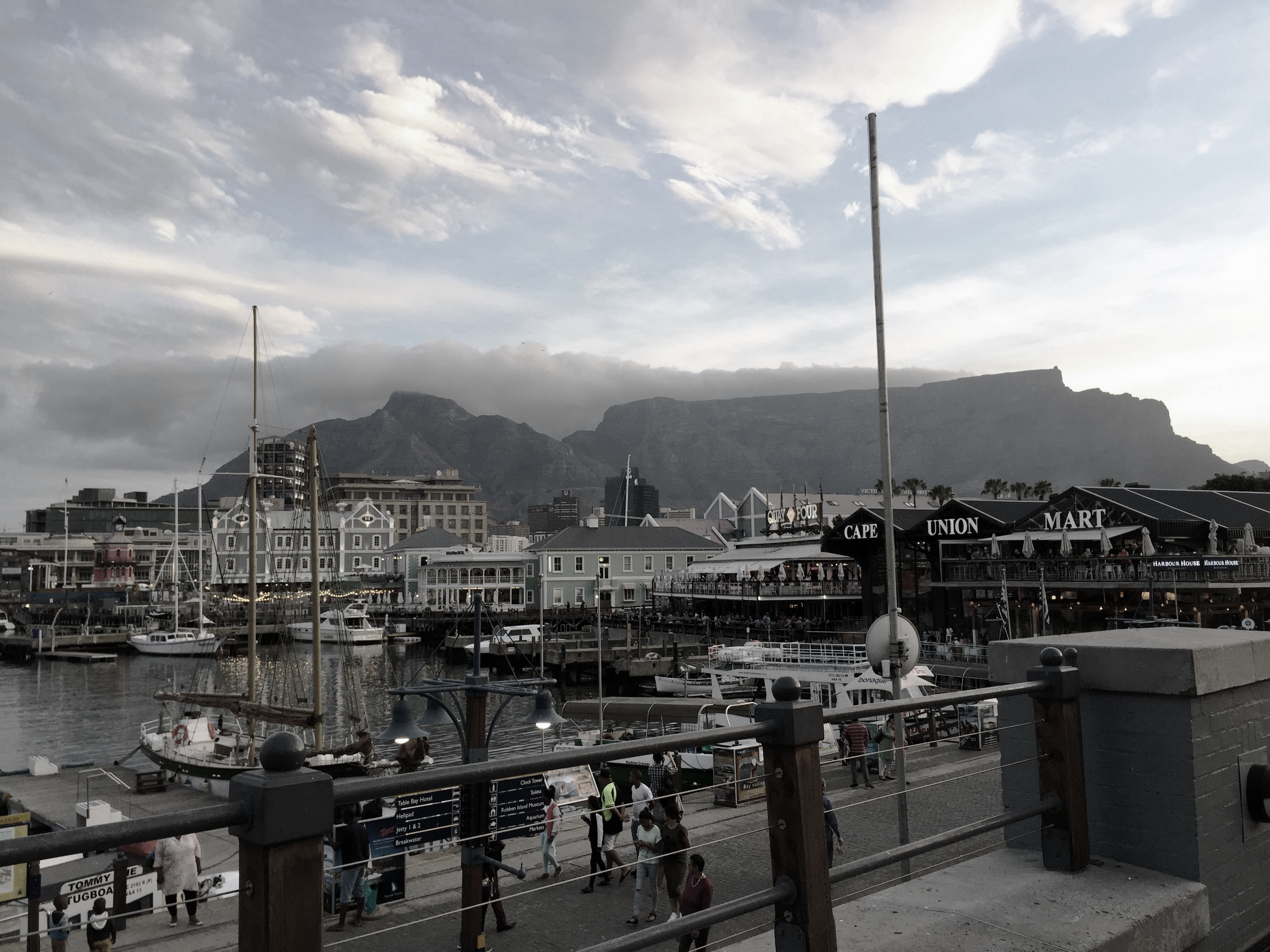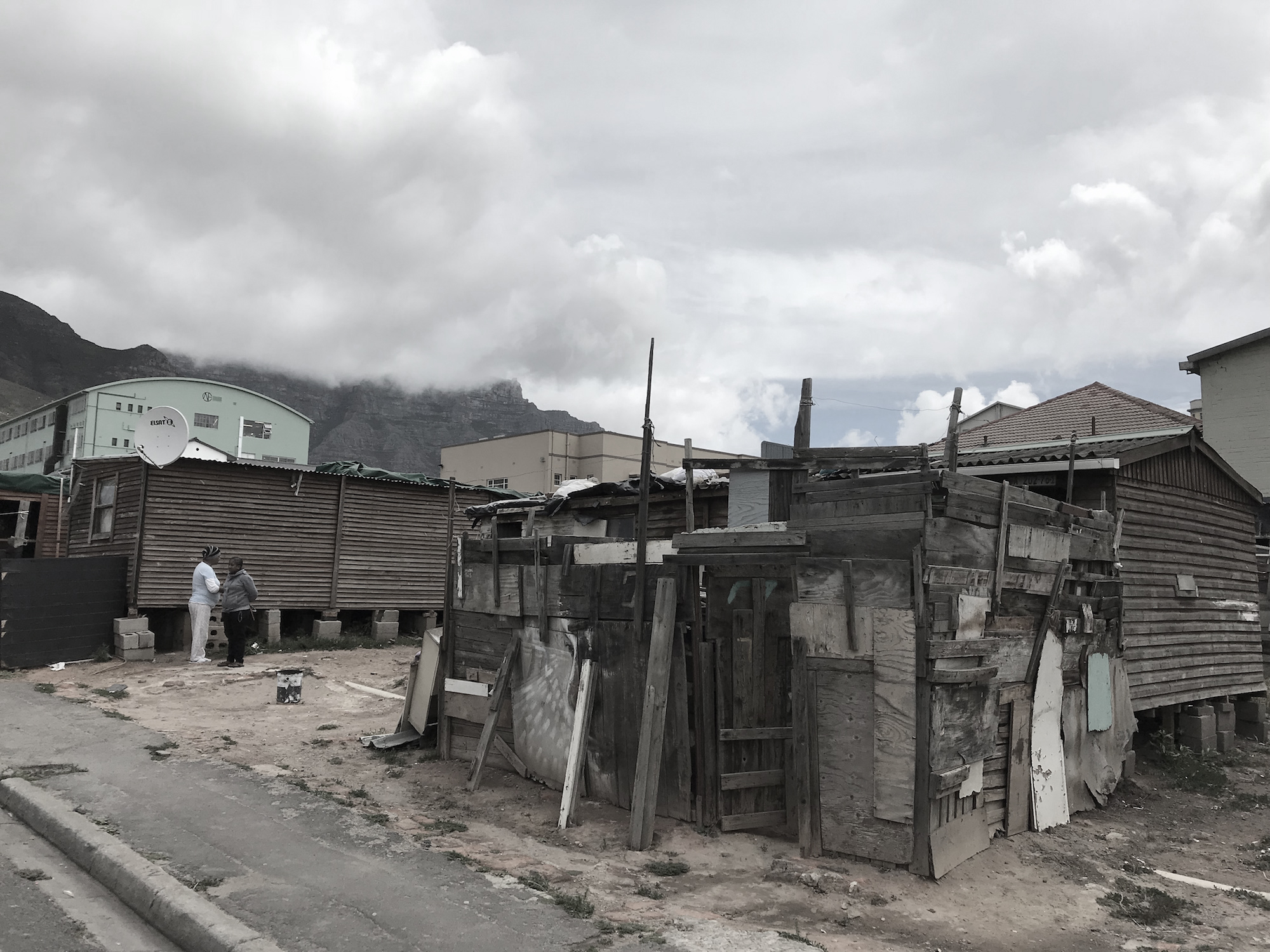Can Partnership Between Neighborhood Civic Organizations and the City of Cape Town Help Reverse Decades of Spatial Apartheid?
On November 13, a small group of wary civic leaders gathered with EcoDistricts Studio faculty in a gritty, vibrant, and increasingly gentrified neighborhood in Cape Town, South Africa. The topic of discussion was the future of their neighborhood, an inner-city area called the Woodstock and Salt River Precinct, and the collision of two competing and interconnected forces: the City’s announcement to bring almost 4,000 new units of affordable housing to the neighborhood and the threat of gentrification that could displace thousands of local working-class people of color who have supported their families, culture, and businesses for generations.
Tension among local and city leaders was palpable in the small conference room of the newly built hotel as the meeting with city staff and civic stakeholders kicked off. The meeting was part of a week-long capacity building workshop to introduce Cape Town to the EcoDistricts Protocol, brought together by USAID’s South Africa Low-Emissions Development Program.
The Woodstock and Salt River precinct sits just north of downtown and east of the City’s port, adjacent to the infamous District 6 – the once vibrant multi-cultural, multi-racial neighborhood of over 60,000 residents that was unceremoniously demolished in the late 1960s to create a new, whites-only neighborhood. South Africa’s singular classification of people, a legacy that dates back hundreds of years and codified during Apartheid, has led to what local politicians and urban planners call “spatial Apartheid.” District 6 is one of the most well-known and brutal expressions of this, a fate that Woodstock and Salt River mercifully avoided.
Over the week, the EcoDistricts team, along with leaders from the Economic Development Partnership, Biohabitats, Justice and Sustainability Associations, the Movement Strategy Center, and Enterprise Community Partners engaged city officials and local civic organizations in a series of conversations to develop a precinct-wide equitable and sustainable development strategy that effectively leverages the City’s investment in affordable housing. As this investment is the City’s most significant commitment to start the reversal of decades of racial segregation and poverty, it was determined that the City and civic organizations needed to contemplate a new model of community development for the area — one that emphasizes a co-creation process that would slowly begin to build trust and leadership among stakeholders. The goal? A declaration community partnership agreement to help to shape local investments.
A Rich History
The Woodstock and Salt River Precinct has long housed generations of working class people of color that found jobs at nearby garment factories and other manufacturers. The proximity to the city business district and harbor made it an ideal area to establish an industrial rail network and hub, defining the landscape with clothing and textile factories such as the Lion Match factory and Snowflake flour mill.
The area ultimately became home to a very unique and diverse population of more than 12,000 residents, 75 percent of whom are Black African or Coloured, in a city historically defined by its use of ethnicity and race-based exclusionary laws to codify segregation and bigotry. Being a hub of industry, the area remained a ‘grey’ zone during the harsh age of evictions following the passing of the Group Areas Act in 1950. Unlike many of its neighbors, these communities managed to resist brutal evictions and remain an integrated community.
Now, 23 years into South Africa’s democracy, they are undergoing spatial reconstruction and experiencing a less explicit form of real estate market evictions as the area becomes a target of investment for mixed-use development and industrial to commercial conversion. The area holds many of the “key ingredients” for a successful rapid and unmitigated gentrification. However, old buildings such as the Junction Hotel, the Locomotive Hotel, and the Bridge Mansions, all regarded as local institutions, still exhibit the historical roots of the suburb.
In addition to the industrial and port jobs that have provided stability in the Woodstock and Salt River Precinct for many years, there is a notable informal economy, including ‘tuck shops’ and small home-based taverns that provide a much-needed source of additional income to residents — in particular vulnerable populations that lack adequate business resources, such as land, storefronts, and low-cost market space. Today, dilapidated row and terrace houses, under-improved storefronts, and commercial and light industrial full of ‘character’ properties are either being demolished to make way for new multi-block developments, or renovated and rezoned for “new-comer” new-economy businesses, such as tech and creative services companies that can afford higher lease rates. This type of development has had an adverse splintering effect on both the physical and socio-spatial qualities of the area.
A New Model of Community Planning Emerges
Over the course of a week, the EcoDistricts Studio engaged city officials, civic organizations, and intermediaries from the City and region to explore a new model of equitable and sustainable development. Using the EcoDistricts Protocol as a framework to identify opportunities for collaborative project governance and target setting, it became clear that there were a great urge and interest in building and maintaining partnerships with a range of key stakeholders to ensure that the next stage of national reconstruction is the establishment of effective communication and transparency.
At the community level, community- and mission-based NGO’s have historically been the backbone networks supporting post-apartheid reconstruction and advocacy work by advancing national, regional, and local low-income housing development, social services, capacity-building, and employment development infrastructure. The organizations are now beginning to find their footing with the dynamic nature of urban infill development, the global trends of re-urbanization, and how to begin addressing the negative impacts and outcomes left unchecked.
With South Africa only twenty-three years removed from Apartheid, there is much work to fully realize the process of restorative justice and build a community development sector. Civic engagement is becoming more deeply and strategically built into city-wide and comprehensive urban planning approaches, but it is still in its early days and quite fragile. In order to build a network of CBOs and citizen groups that can effectively address the pressing issues of climate change, affordable housing, gentrification, and on-going spatial Apartheid it will take time and investment from government and civil society.
Organizations like the Development Action Group (DAG), a leading local NGO in the urban sector, are building capacity with other aligned organizations including Open Streets, Built Environment Support Group (BESG), Cape Town Partnership, Future Cape Town, Greater Cape Town Civic Alliance, National Department of Human Settlements, PEP Housing, PlanAct, Social and Enterprise Development Innovations (SEDI), Urban LandMark, and Western Cape Department of Human Settlements.
The amount of civic activism, a long-standing tradition in South Africa is inspiring. However, civic groups are under-funded, and actively seeking meaningful interaction and legitimacy with the government as a key component of any further work around city planning, design, forecasting, and development – at a time of change and stress.
The week in Cape Town provided the EcoDistricts Studio a small window into the City’s rich and varied history, in which strong community bonds have been forged despite economic hardships and human rights abuses during Apartheid. The Woodstock and Salt River Precinct presents significant opportunities for densification and urbanization, given its proximity to key commercial nodes; public transportation accessibility; availability of land; a network of social facilities; and private sector interest in housing development, but only if equity is embraced as a core goal and strategy.



It will be interesting to see how all this plays out in light of the fact that Capetown is due to run out of water by April of this year. Then we’ll really get a chance to see what a community does in times of basic need and scarcity…